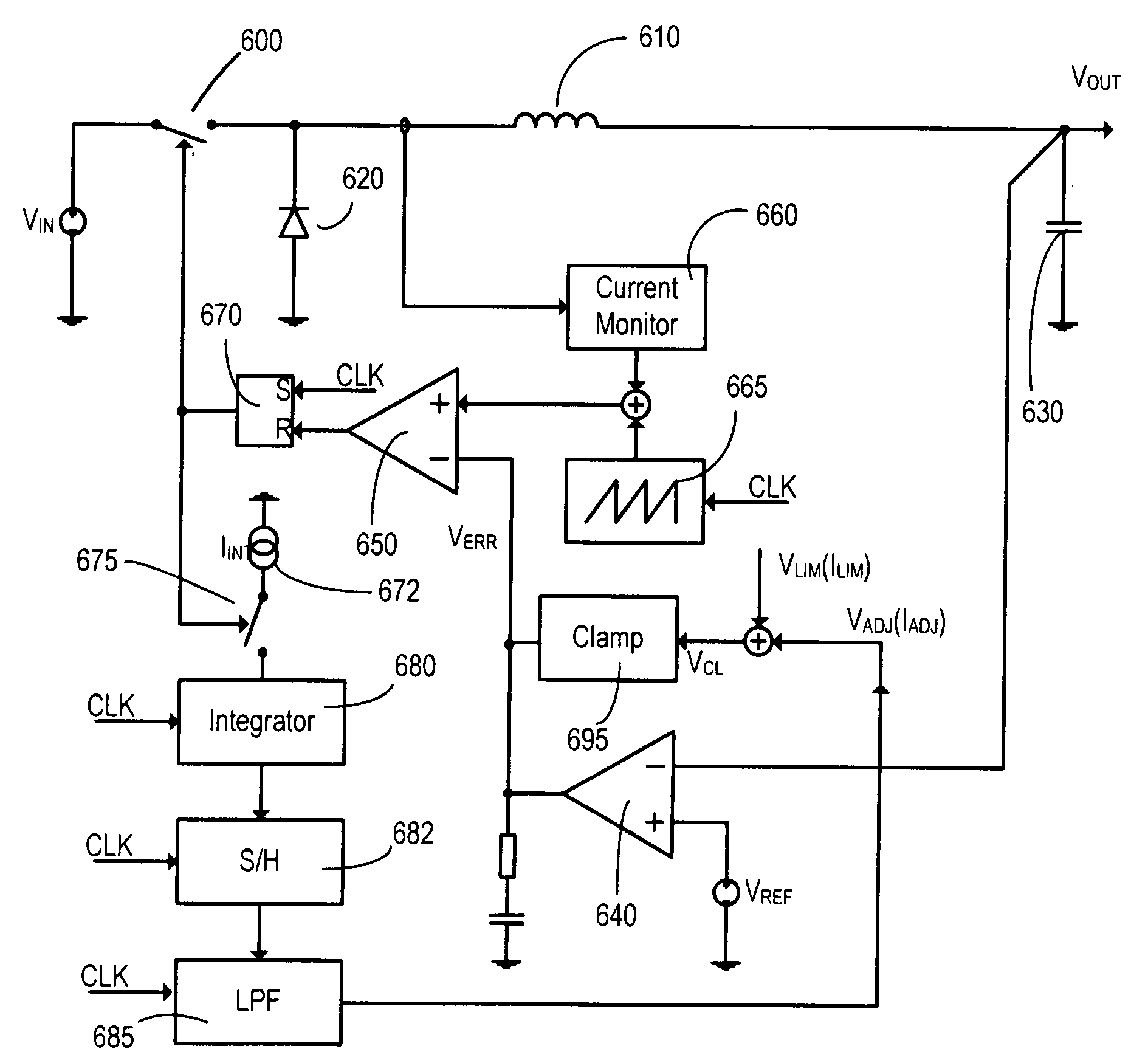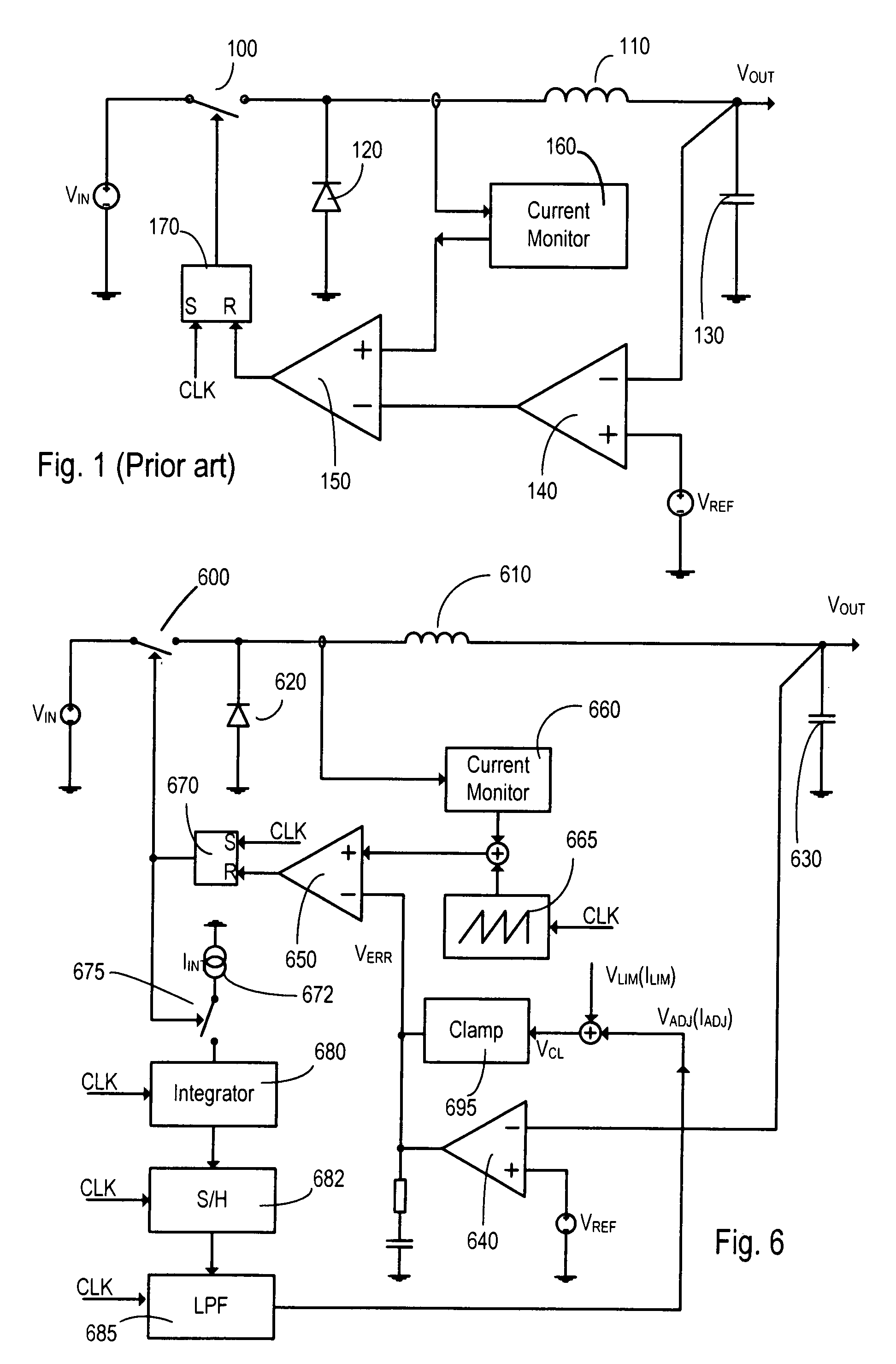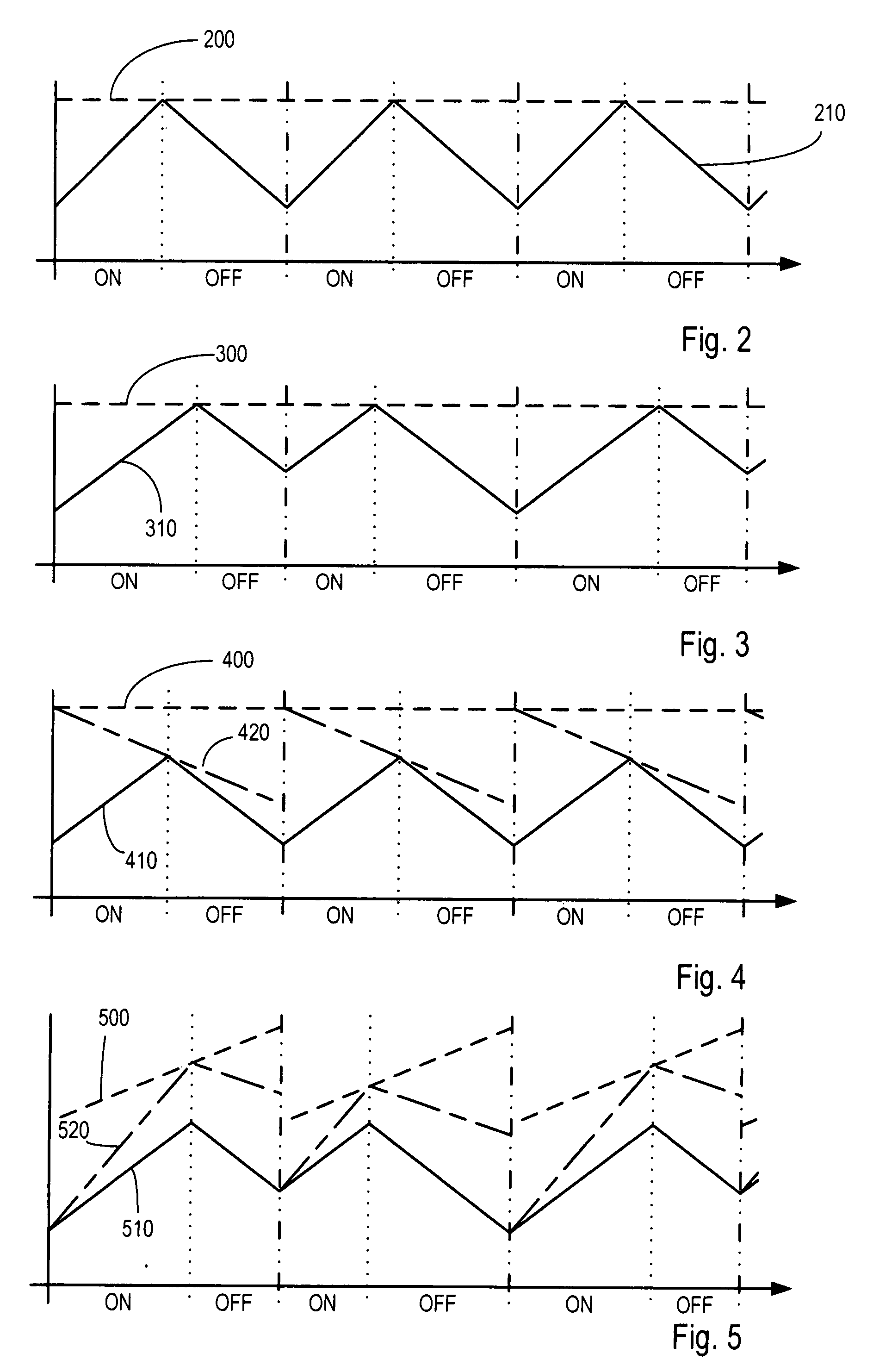Switching regulator circuits
a technology of switching regulator and circuit, which is applied in the direction of power conversion system, dc-dc conversion, instruments, etc., can solve problems such as subharmonic oscillation
- Summary
- Abstract
- Description
- Claims
- Application Information
AI Technical Summary
Benefits of technology
Problems solved by technology
Method used
Image
Examples
Embodiment Construction
[0048]FIG. 1 shows a block diagram of a basic constant frequency buck converter, although it will be understood that the principles apply equally to any current-mode controlled constant frequency DC-DC converter. The buck converter consists of a power source VIN, a switch 100, an inductor 110, a diode 120 (this could be replaced with a switch running in anti-phase to switch 100), a capacitor 130, an error amplifier 140 (with optional compensating network not shown on this drawing) and reference voltage source VREF, a comparator 150, a current monitor 160 and a latch 170 (with a clock CLK as one input) all connected as shown. In operation, the switch 100 is connected to an input voltage VIN and is closed at the beginning of a clock cycle. Closing the switch causes the current in an inductor 110 connected between the switch 100 and the output VOUT of the converter to rise. This current is monitored by current monitor 160 and is compared by comparator 150 against the output of an error...
PUM
 Login to View More
Login to View More Abstract
Description
Claims
Application Information
 Login to View More
Login to View More - R&D
- Intellectual Property
- Life Sciences
- Materials
- Tech Scout
- Unparalleled Data Quality
- Higher Quality Content
- 60% Fewer Hallucinations
Browse by: Latest US Patents, China's latest patents, Technical Efficacy Thesaurus, Application Domain, Technology Topic, Popular Technical Reports.
© 2025 PatSnap. All rights reserved.Legal|Privacy policy|Modern Slavery Act Transparency Statement|Sitemap|About US| Contact US: help@patsnap.com



